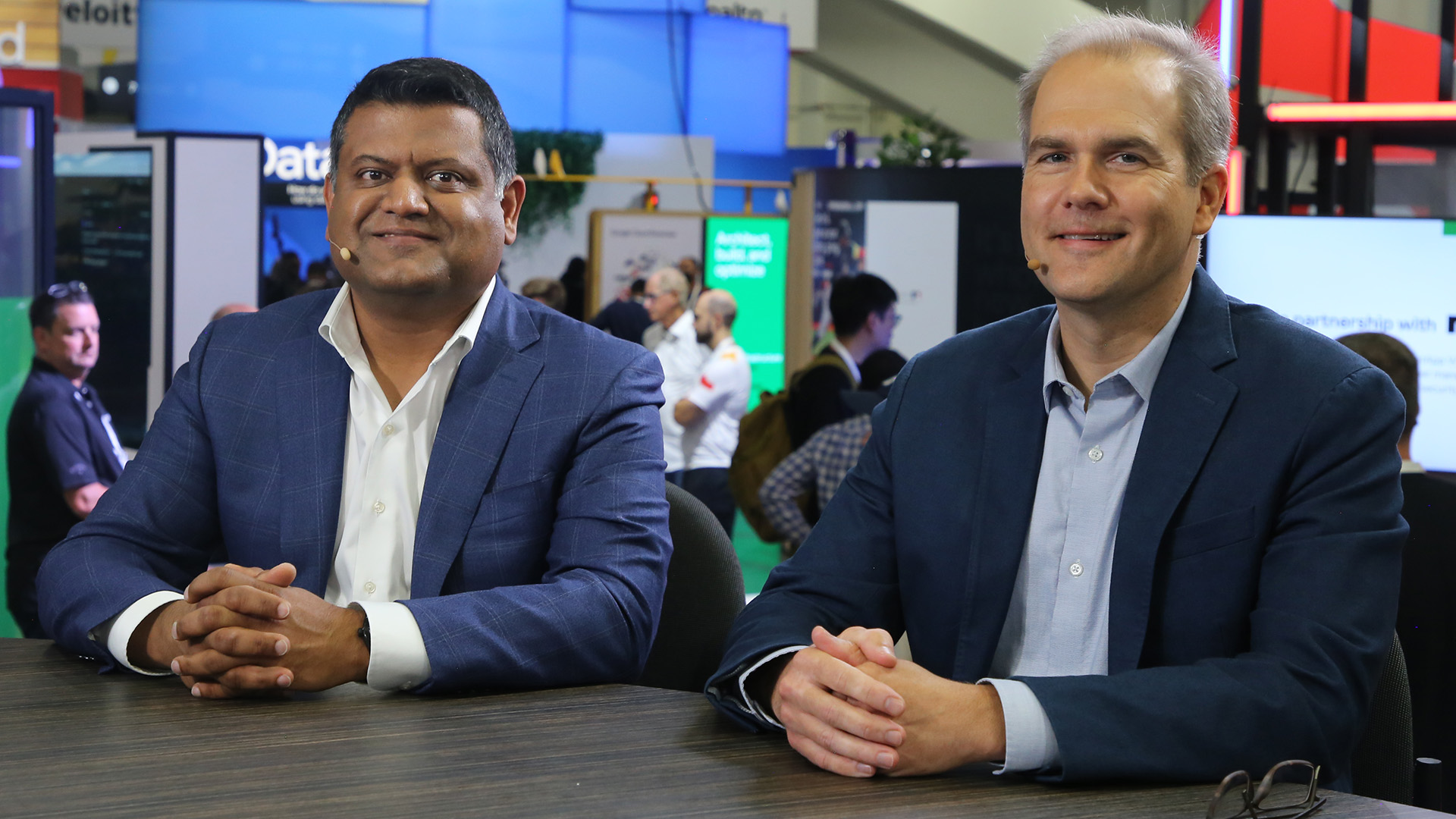 AI
AI
 AI
AI
 AI
AI
The artificial intelligence market is being driven by a number of factors, including the increasing availability of data, the falling cost of compute power and the growing demand for AI-powered applications.
Because the AI sector will continue to grow, there needs to be a nuanced discussion on its evolving infrastructure needs — and how companies such as Google LLC are staying equipped to meet those demands.
“If you look at the size of large language models, they’ve been growing on average 10x per year over the last five years, and that’s placing incredible demand on infrastructure,” said Mark Lohmeyer (pictured, right), vice president and general manager for compute and machine learning infrastructure at Google. “At Google, we’re really excited to be able to help customers meet those needs with a comprehensive and advanced stack that includes all these great hardware capabilities: GPUs, TPUs, storage [and] how we bring them together from a networking perspective.”
Lohmeyer and Sachin Gupta (left), co-founder and chief executive officer of HackerEarth Inc., spoke with theCUBE industry analysts John Furrier and Rob Strechay at the Google Cloud Next event, during an exclusive broadcast on theCUBE, SiliconANGLE Media’s livestreaming studio. They discussed new-age AI infrastructure being facilitated by breakthrough computing hardware. (* Disclosure below.)
While AI has been embedded in products, such as virtual assistants and automation software, for years, we’ve only scratched the surface of high-reasoning, ingenious AI. That only started, perhaps, with ChatGPT and is now seeing a flood of innovation and investment from names such as Google and HackerEarth.
On the networking side of things, HackerEarth creates a pathway for companies to fully leverage Google Cloud and its accompanying host of AI capabilities, according to Gupta.
“If you want to use Vertex, for example, or BigQuery or Spanner, but your data is sitting on-premises or in another cloud provider, connecting that and securely bringing it into Google Cloud so that you can get the best of our services is what customers are looking for — [and what] the cross-cloud network is about,” he explained. “Right next to those GPUs and TPUs, you also need storage that’s built for AI and data. Customers are looking for files, but [also] object storage, scale and performance.”
AI requires a lot of data, so in addition to moving freely, that data has to sit somewhere. Capable storage solutions are, therefore, an intrinsic foundation for the AI future being built. HackerEarth has partnered with Intel Corp. to boost performance on parallel file systems, Gupta added.
“That was an innovation that we had to bring out in storage to help these AI workloads,” he said. “We’re partnering with Intel actually on their Deos technology and bringing that into our parallel store product that gives you much, much higher performance parallel file systems. And that’s more for like HPC type of use cases that also leverage ML capabilities.”
Through strategic partnerships and a customer-centric approach, Google is shaping the future of AI infrastructure and accelerating the journey toward transformative AI-driven applications for the enterprise.
Here’s the complete video interview, part of SiliconANGLE’s and theCUBE’s coverage of the Google Cloud Next event:
(* Disclosure: Google LLC sponsored this segment of theCUBE. Neither Google nor other sponsors have editorial control over content on theCUBE or SiliconANGLE.)
THANK YOU